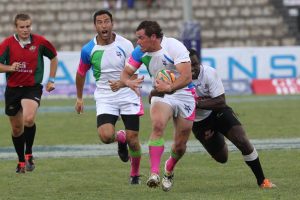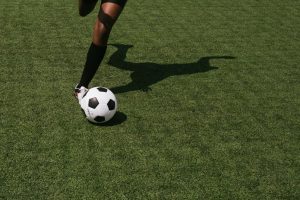What Is a Knuckleball in Soccer?
Do you want to master the elusive knuckleball technique in soccer? Discover the secrets behind this unique shot and learn how to execute it with precision.
In this article, we will delve into the physics behind the knuckleball technique, provide step-by-step instructions on how to execute it, and offer valuable tips to help you perfect your technique.
Avoid common mistakes and gain an understanding of the advantages and disadvantages of using the knuckleball technique in soccer.
Get ready to take your game to the next level!
The Physics Behind the Knuckleball Technique
You should study the physics behind the knuckleball technique to understand its effectiveness.
The knuckleball is a unique technique in soccer that involves hitting the ball with the instep of your foot, causing it to move unpredictably through the air.
By learning the physics behind the knuckleball, you can better understand why it’s so difficult for goalkeepers to save.
The key to the knuckleball’s movement lies in the lack of spin. When you strike the ball without any spin, it creates turbulent air flow around the ball, causing it to change direction unpredictably.
This makes it challenging for goalkeepers to anticipate where the ball will go, increasing your chances of scoring.
How to Execute a Knuckleball Shot
To execute a knuckleball shot, all you need to do is strike the ball with the instep of your foot and aim for a specific spot on the ball, while keeping your body relaxed and balanced.
This technique can be quite effective in surprising the goalkeeper and creating unpredictable movement in the air.
First, position your non-kicking foot beside the ball and your kicking foot a few steps behind. As you approach the ball, swing your kicking foot forward and make contact with the instep area. Remember to keep your ankle locked and your toes pointed down.
Focus on hitting the ball cleanly and squarely on the targeted spot.
Finally, maintain a relaxed body posture throughout the shot, allowing the ball to spin and dip unpredictably.
With practice, you can master the knuckleball shot and add an element of surprise to your game.
Tips for Mastering the Knuckleball Technique
The key to mastering the knuckleball technique is to practice regularly and stay focused. By dedicating time and effort to perfecting this unique skill, you can become a master of the knuckleball. To help you visualize the different components of this technique, here is a table outlining the key tips for mastering the knuckleball:
| Tip | Description |
|---|---|
| Focus on technique | Pay attention to your form and technique, ensuring that you strike the ball cleanly and smoothly. |
| Use the right foot placement | Position your foot slightly to the side of the ball, allowing for a cleaner strike. |
| Aim for a clean contact | Try to hit the ball with the bony part of your foot, just below the laces, for maximum effect. |
| Apply the right amount of power | Strike the ball with enough force to generate spin, but not so much that you lose control. |
| Practice, practice, practice! | The more you practice the knuckleball technique, the better you will become at it. |
Common Mistakes to Avoid When Attempting a Knuckleball Shot
Avoid rushing through your approach and focus on maintaining proper technique when attempting a knuckleball shot. Taking your time and executing the shot correctly will increase your chances of success.
Here are a few common mistakes to avoid:
- Gripping the ball too tightly: A loose grip allows for better control and movement of the ball in the air. Avoid squeezing it too hard, as this can affect the spin and trajectory.
- Failing to follow through: Follow-through is crucial in generating power and accuracy. Make sure to extend your leg fully and strike the ball cleanly, following through with your kicking motion.
- Neglecting body positioning: Your body position plays a significant role in the outcome of the shot. Keep your body over the ball, maintain balance, and ensure your non-kicking foot is planted firmly on the ground.
The Advantages and Disadvantages of Using the Knuckleball Technique in Soccer
You can definitely improve your shooting skills by utilizing the knuckleball technique, but it requires practice and precision. The knuckleball technique in soccer involves striking the ball with little spin, causing it to move unpredictably in the air. This can confuse the goalkeeper and increase your chances of scoring. However, there are both advantages and disadvantages to using this technique.
| Advantages | Disadvantages |
|---|---|
| 1. Unpredictable movement can make it difficult for the goalkeeper to save. | 1. It requires a lot of practice to master the technique. |
| 2. The ball can dip, swerve, or change direction suddenly, making it challenging to defend against. | 2. It can be difficult to control the accuracy and power of the shot. |
| 3. It can be a useful weapon for free kicks and long-range shots. | 3. Inconsistent execution can result in weak or ineffective shots. |
| 4. It can surprise opponents who are not familiar with the technique. | 4. It may not be as effective against skilled and experienced goalkeepers. |
Frequently Asked Questions
Can the Knuckleball Technique Be Used in Other Sports Besides Soccer?
Yes, the knuckleball technique can be used in other sports besides soccer. It can be applied in baseball, particularly in pitching. Other sports like volleyball and basketball also incorporate variations of the knuckleball technique.
Are Certain Foot Placements or Stances More Effective When Attempting a Knuckleball Shot?
Certain foot placements or stances can definitely enhance your chances of successfully executing a knuckleball shot. Experiment with different positions and find what works best for you to achieve that unpredictable ball movement.
How Long Does It Typically Take to Master the Knuckleball Technique?
It typically takes time and practice to master the knuckleball technique in soccer. With consistent effort and focus, you can improve your skills and become proficient at executing this unique shot.
Is the Knuckleball Technique More Effective for Long-Range Shots or Close-Range Shots?
The knuckleball technique is more effective for long-range shots. It causes the ball to have unpredictable movement and makes it difficult for the goalkeeper to anticipate its trajectory.
Are There Any Specific Goalkeeper Techniques or Strategies to Counter a Knuckleball Shot?
To counter a knuckleball shot, goalkeepers should focus on positioning themselves correctly, anticipating the trajectory, and using proper hand positioning. By staying alert and reacting quickly, you can increase your chances of stopping a knuckleball shot.
Conclusion
In conclusion, mastering the knuckleball technique in soccer can be a game-changer for players. The physics behind it, combined with proper execution and practice, can lead to unpredictable and challenging shots for goalkeepers.
However, it’s important to remember that this technique requires patience and perseverance to avoid common mistakes.
While it may have its advantages, it also has its disadvantages, so players should consider these factors before incorporating the knuckleball technique into their game.








